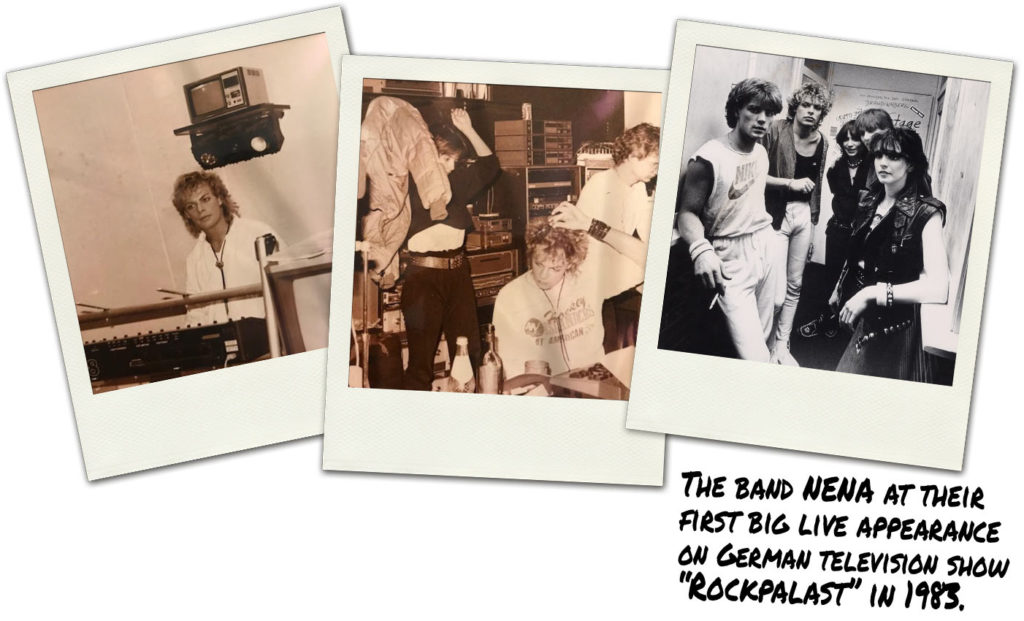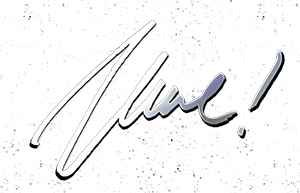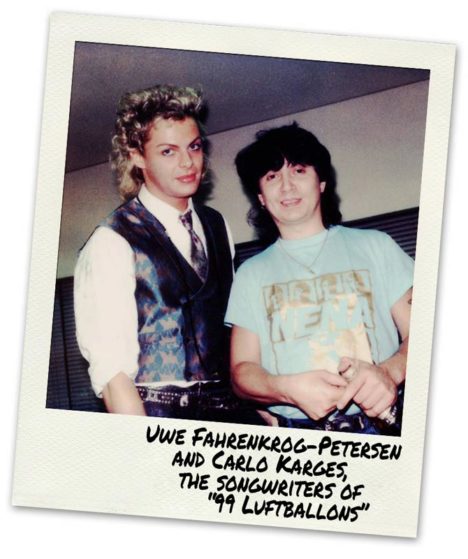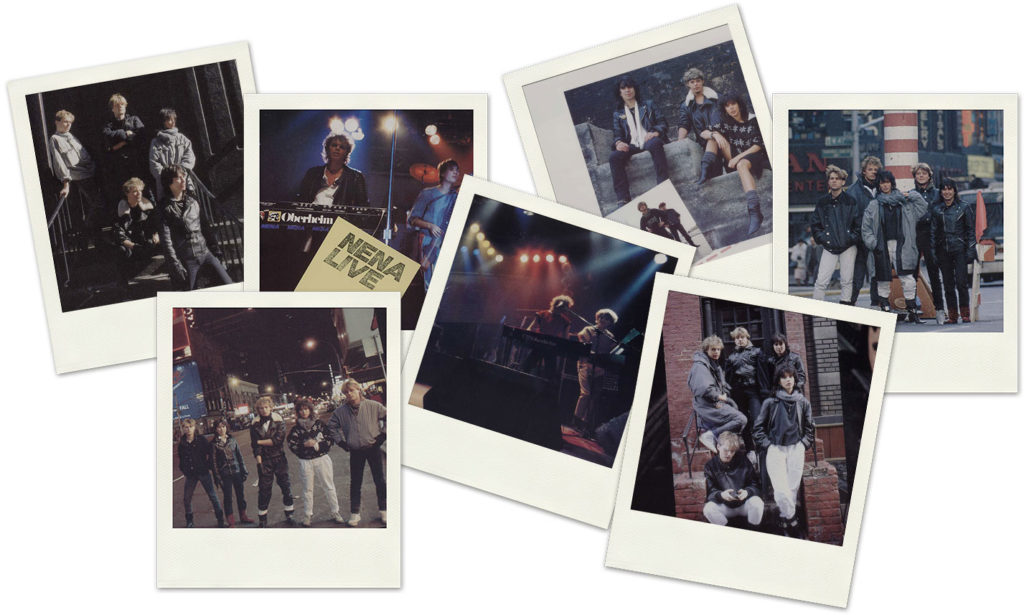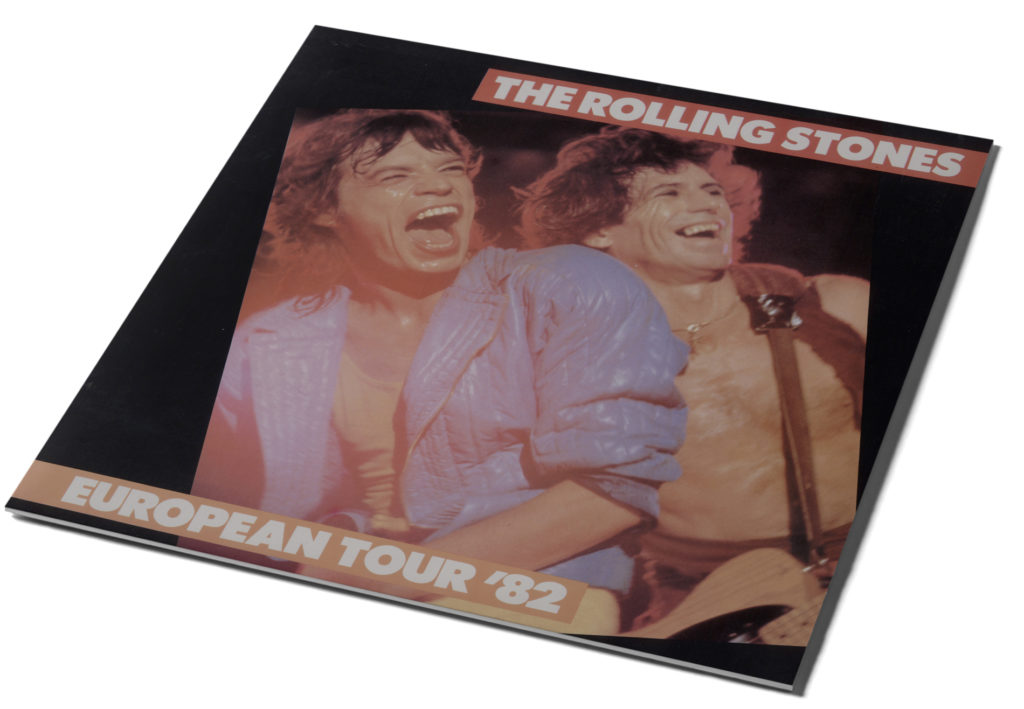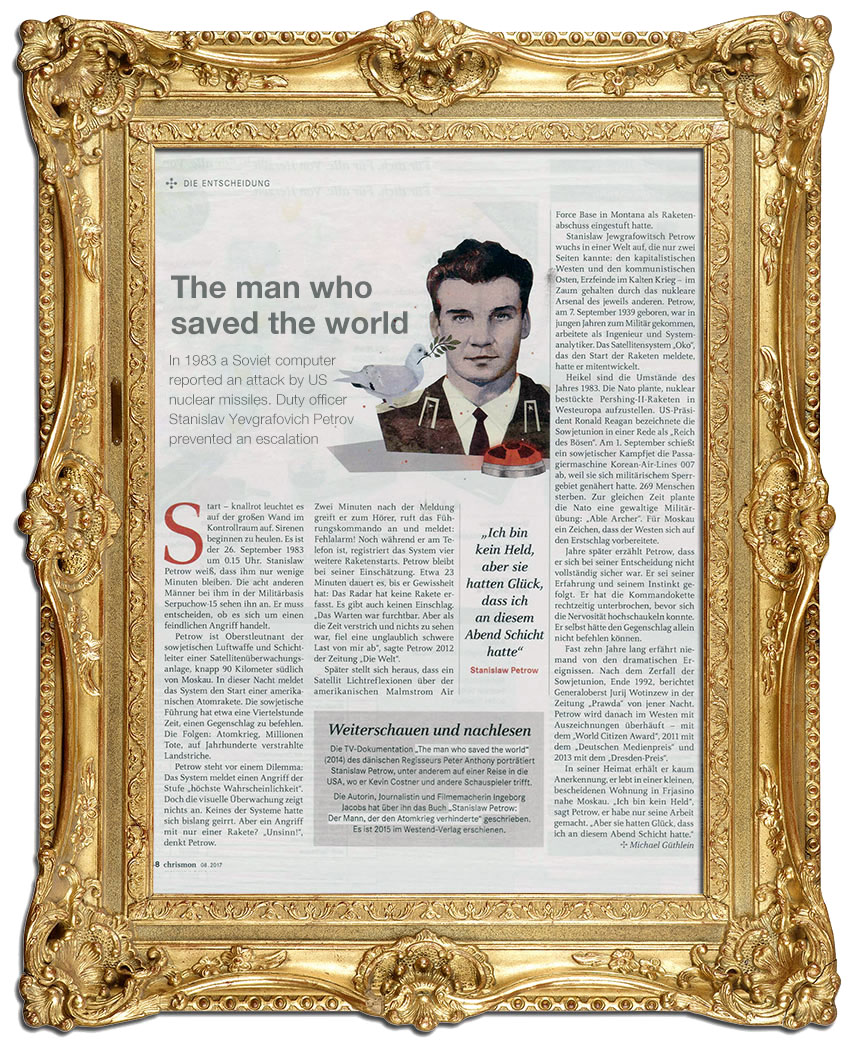Welcome
to the first and only comprehensive digital exhibition about 99 Luftballons (English title: 99 Red Balloons), one of the most remarkable and relevant songs in music history:
Foreword
by Uwe Fahrenkrog-Petersen
How did the song 99 Luftballons
come to be written?
“99 Red Balloons“
Original lyrics by Carlo Karges /
English lyrics by Kevin McAlea
[verse 1]
You and I in a little toy shop
Buy a bag of balloons with the money we’ve got
Set them free at the break of dawn
‘Til one by one, they were gone
Back at base, bugs in the software
Flash the message, “Something’s out there”
Floating in the summer sky
99 red balloons go by.
[verse 2]
99 red balloons floating in the summer sky
Panic bells, it’s red alert
There’s something here from somewhere else
The war machine springs to life
Opens up one eager eye
Focusing it on the sky
Where 99 red balloons go by.
[verse 3]
99 Decision Street
99 ministers meet
To worry, worry, super-scurry
Call the troops out in a hurry
This is what we’ve waited for
This is it boys, this is war
The president is on the line
99 red balloons go by.
[verse 4]
99 knights of the air
Ride super high tech jet fighters
Everyone’s a silver hero
Everyone’s a Captain Kirk
With orders to identify
To clarify and classify
Scramble in the summer sky
99 red balloons go by.
99 red balloons go by.
[verse 5]
99 dreams I have had
In every one a red balloon
It’s all over and I’m standing pretty
In this dust that was a city
If I could find a souvenir
Just to prove the world was here
And here is a red balloon
I think of you and let it go.
A sensation for all fans of the song!
Production
